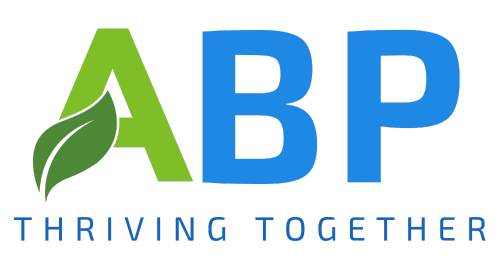How Cities Can Influence Cut-Offs of Alcohol Service at New Businesses
(Part of the “Drunk, Drunker, and High-Risk Drunkenness” series)
RECAP OF PRIOR INSIGHT
- Enforcing the law against serving obviously intoxicated customers benefits businesses.
- The ABC issued just six violations last year—for its more than 94,000 licensed businesses.
- Studies show that enforcement significantly increases cut-offs and improves public safety.
- Officer observation time of a drunk customer before being served, for a successful prosecution, can be as little as 20-30 minutes, or longer.
- Three years after California’s Responsible Beverage Service training law took effect, the ABC has posted or publicized no enforcement actions against licensees whose alcohol managers and servers have not been trained.
Short on time? Skip to the recap below!
Why it matters that cities are visionary with new alcohol businesses
Research indicates that the more proactive city officials are in addressing overconsumption in licensed businesses, the lower the public safety expenses and community harms.

- For every $1 invested in reducing over-intoxication, cities save $260 (Levi & Miller).
- Fewer intoxicated customers mean fewer 911 calls, fewer injuries and deaths, less strain on first responders, and less public safety expenses.
- Police and fire services are the two largest expenses for California cities (Public Policy Institute of California, 2024).
- In California, one arrest for aggravated assault costs a city over $14,000—not including court costs (RAND Corporation).
- Cities that analyze the impact of alcohol abuse in their communities find a relationship between alcohol and arrests. Newport Beach found that 1,143 (32%) of their arrests were due to alcohol. Ventura found that alcohol was involved in 43% of arrests and 60% of violence arrests.
Historically, the lack of best practices for key stakeholders (business owners and managers, planners, planning commissioners, and law enforcement) has exacerbated the challenge to minimize these problems.
The gap in the alcohol licensing process
City officials often assume that during the licensing process, the Department of Alcoholic Beverage Control (“ABC”) gives the license applicant explicit expectations for responsible alcohol management.
In reality, the licensing process is just paperwork. No clear-cut expectations are set. Although on-sale alcohol servers and their managers are required to attend ABC-certified training, the licensees (owner-operators) lack information and training on best practices for managing their drinking environments.
The gap at ABC during the licensing process leaves cities to fill the void in helping the applicant manage the drinking environment from the start. If the business is mismanaged, it’s the public that suffers, and city resources that are drained.
Below are 9 proactive actions that cities can take to protect all stakeholders:
Nine key city actions for approval of alcohol businesses
Cities can have a profound influence on a business’s practices before a license is approved. This strategy includes consistent messaging to applicants and meaningful conditions of approval during the Conditional Use Permit process.
The following are low-cost preventative steps for city leaders to take:
1. Alcohol Pledge Form. The property owner and applicant sign this form. It contains key expectations on responsible alcohol management. It covers the importance of cut-offs and keeping a cut-off log. If a city would like to use the pledge form that we created, they can contact us.
2. Planner Meeting. The applicant meets with a planner in person to submit the application package. During the meeting, the planner gives the applicant the Best Practices for Nightlife Establishments booklet. The planner uses written talking points to connect the dots between the best practices in the booklet and increased public safety, fewer calls for service, and improved business profitability and viability. The planner emphasizes the applicant's duty to cut off obviously intoxicated customers and maintain a cut-off log that law enforcement and code enforcement will review.
The planner tells the applicant to be prepared to address, during the public hearing, how they plan to add the best practices into the business’s training and policy and procedure documents.
3. Conditions of Approval. The planning department, with law enforcement input, prepares meaningful conditions of approval that when followed, prevent the business from becoming disorderly and a problem for the city. One key condition, and one we’ve never seen imposed unless we’ve contracted with the city, is:
The business must maintain a daily cut-off log and present it to law enforcement or code enforcement upon request.
4. Study session. If the city invites the applicant to a study session before the public hearing, again, the applicant hears about and then commits to the key expectations on responsible alcohol management. The session should emphasize the need to cut off obviously intoxicated customers and maintain a cut-off log that law enforcement and code enforcement will review. The city asks the applicant if they have reviewed the Best Practices for Nightlife Establishments booklet and tells them to be prepared to address, during the public hearing, how they plan on incorporating the practices into their business’ training and policy and procedure documents.
5. Public hearing. Each planning commissioner uses their own written talking points to ensure that they cover key topics with the applicant at the public hearing. Each planning commissioner references specific practices in the Best Practices for Nightlife Establishments booklet and asks the applicant how they plan to incorporate the best practices into the business.
There’s an emphasis on preventing overservice, the need to cut off obviously intoxicated customers, documenting cut-offs, and regular city review of the cut-off logs. Planning commissioners make it clear to the applicant that if approved, the approval is conditional and noncompliance will result in changes to the privileges, including possible revocation.
6. Pre-opening meetings. City law enforcement and code enforcement meet with alcohol business owners and managers to review the conditions of approval and key best practices from the Best Practices for Nightlife Establishments booklet. This connects the dots between selected best practices and fewer calls for service and improved profitability. Critical topics include practices to prevent overservice, the need to cut off alcohol service when appropriate, and review of the cut-off logs. It’s recommended that law enforcement officers document their talking points to ensure consistency.
If the business has a security department, law enforcement should hold a similar pre-opening meeting with business management and security staff. Security, when staffed, is often tasked with doing cut-offs.
The law enforcement officer connects the dots between the security best practices in the Best Practices for Nightlife Establishments booklet and fewer calls for service. The officer emphasizes the need to cut off when appropriate, the use of a cut-off log, and that the logs are reviewed by law enforcement upon demand. We recommend that the officer use written talking points to ensure consistency.
7. Follow-up meeting. This meeting is held within thirty days of the business opening. The meeting includes city law enforcement, code enforcement, and business management. The purpose is to review performance using documented talking points. The focus should be on observations specific to customer intoxication and cut-off logs.
8. Bar checks. During routine visits and calls for service, officers examine the cut-off logs.
9. Enhanced bar checks. Per a documented law enforcement protocol, the business floor manager leads a team of officers through the business. The primary purpose is to look for overconsumption and to review the cut-off logs. We’ll cover the details of enhanced bar checks in our next Insight.
If problems arise, such as excessive calls for service or signs of overservice, the city should order the business to return to the planning commission for probation, new conditions, or revoked privileges.
The above recommendations on how to influence the performance of new businesses also apply to existing businesses that seek to (a) change their operation in a way that can trigger changes to their conditional use permit or (b) add an entertainment permit.
Of course, not all businesses require a conditional use permit or entertainment permit.
The main message from the city to new business owners should be . . .
“Your business future depends on not serving obviously intoxicated customers.”
A final word . . .
Drunk patrons cause lawsuits, neighborhood complaints, assaults, and DUI tragedies, which in turn drain city safety budgets. Consistent cut-offs protect the public, business, and city.
If the city follows the above recommendations, it’s unlikely that a new business will fail to conform to city expectations and standards.
A more challenging situation is getting a business with bad habits to change its ways. We’ll discuss that in our next Insight.
Coming up in this series
- How cities can influence cut-offs at
existing businesses
- How to guide businesses to increase cut-offs
- How cut-offs reduce "churn" (customer turnover)
RECAP
- For every $1 that a city spends to reduce intoxication, it saves $260 (Levi & Miller)
- At every step in the process of evaluating and conditioning new alcohol businesses, the city should share consistent messaging. The main message is “Your business future depends upon not serving obviously intoxicated customers.”
- A key condition of approval requires the business to maintain a cut-off log and to present the log to law enforcement and code enforcement upon demand.
- The Best Practices for Nightlife Establishments booklet is a ready reference during meetings between the businesses and planners, by planning commissioners, and by law enforcement when dealing with new, existing, or disorderly/problem businesses.
- Documented talking points connect conditions of approval with specific best practices that improve business viability while protecting city resources and public safety.









